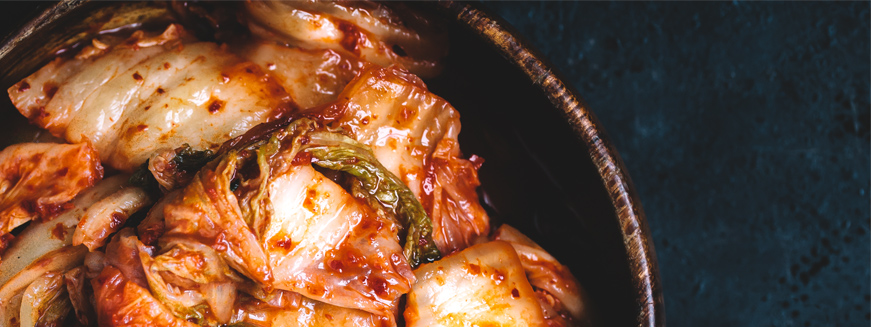The Fresh Blog
Lifestyle, Health, Nutrition & Inspiration from Luvo
Make Your Own Kimchi
Kimchi is one of my favorite things to eat. I look forward to going to the farmer’s market every Saturday to grab some sweet daikon radish kimchi handmade by a local artisan. I’m lucky if the jar lasts me until the next farmer’s market. Now you know about one of my most guilty pleasures. Actually… scratch that–I don’t believe in guilty pleasures. There’s stuff you like, and stuff you don’t like, and if anyone objects to your preferences, you tell them where to go, ok?
The thing that might make one feel guilty about kimchi is that it has a very strong smell, but aren’t all of the world’s most delicious foods pungent in one way or another? Open a jar of kimchi and you won’t soon forget that you did, but you won’t regret the impending flavor explosion you’re about to experience, either. It’s a truly wonderful mix of spicy, tangy, salty and sometimes sweet, depending on the ingredients included in the recipe.
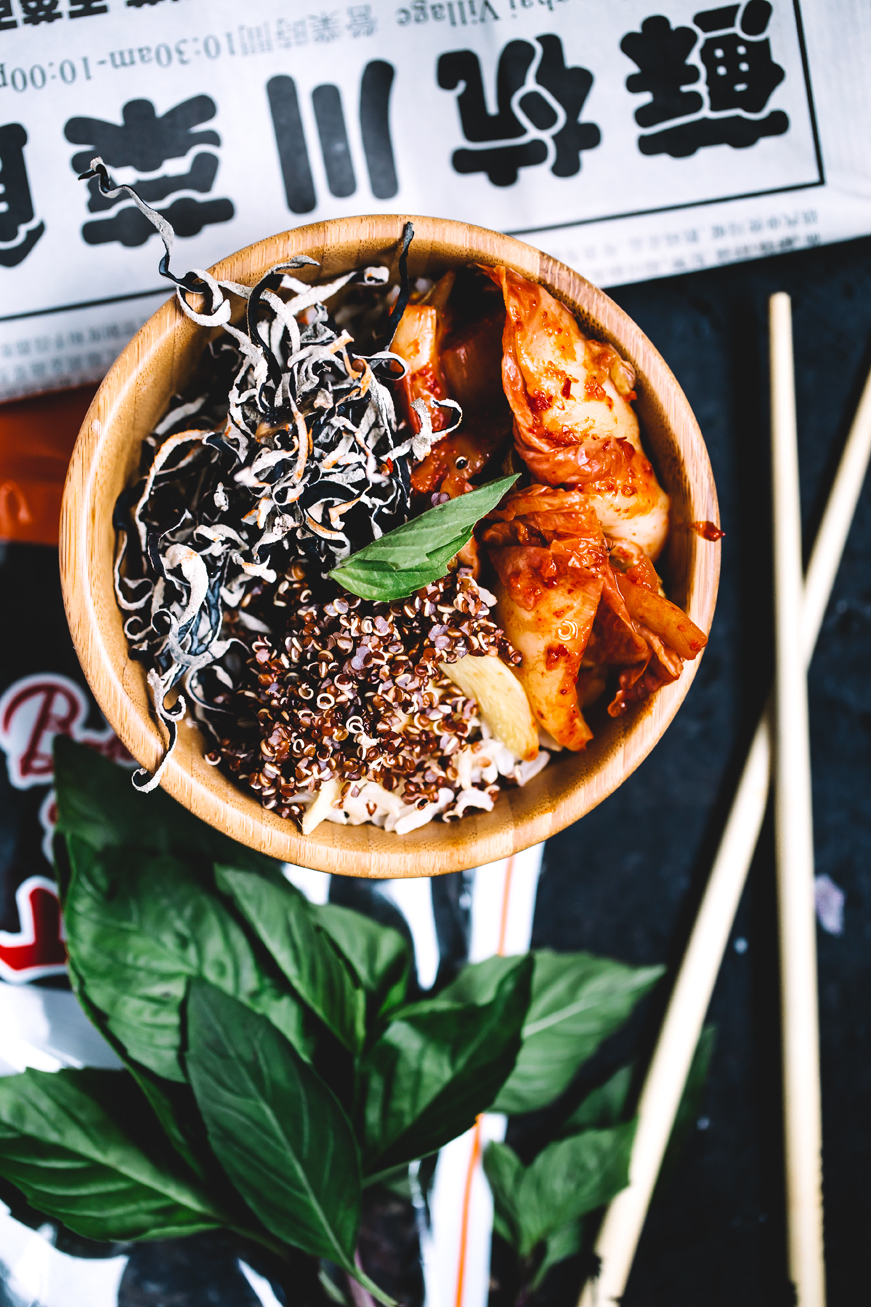
What is kimchi?
If you’re unfamiliar with it, kimchi is Korea’s national dish, and it’s about as common on Korean dinner tables as ketchup in America. It’s most often made of fermented vegetables seasoned with Korean red chili flakes, so it’s kind of like a spicy pickle. Kimchi is usually made with napa cabbage, daikon radish, green onions, cucumbers, or a combination of any of these ingredients. In Korea, it’s served as a side dish on its own, with white rice, or incorporated into other dishes like soup, fried rice and savory pancakes.
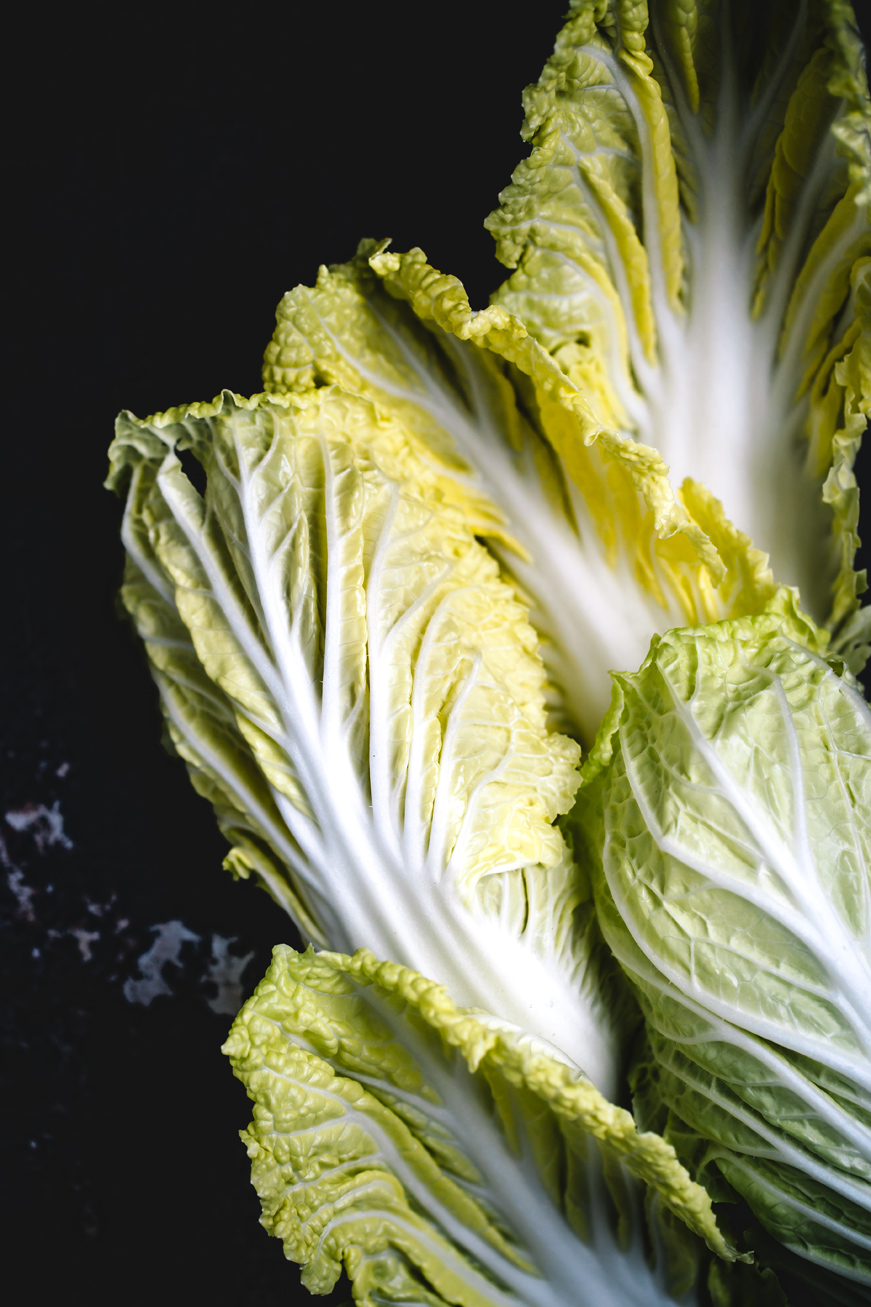
One of the world’s healthiest foods
Kimchi is not only delicious, but it’s also incredibly good for you, so you never have to feel guilty about eating it. In fact, Health magazine named it one of the top five healthiest foods in the world. Why? It’s very high in dietary fiber and low in calories. It’s also a great source of vitamin C, vitamin A, thiamine, riboflavin, calcium and iron.
Kimchi is also usually fermented (much like sauerkraut, for example), which helps with natural preservation and creates beneficial enzymes and probiotics that help promote healthy digestion and absorption of nutrients. If you want to eat more probiotics but you’re getting bored with the yogurt routine, try incorporating some kimchi into your diet.
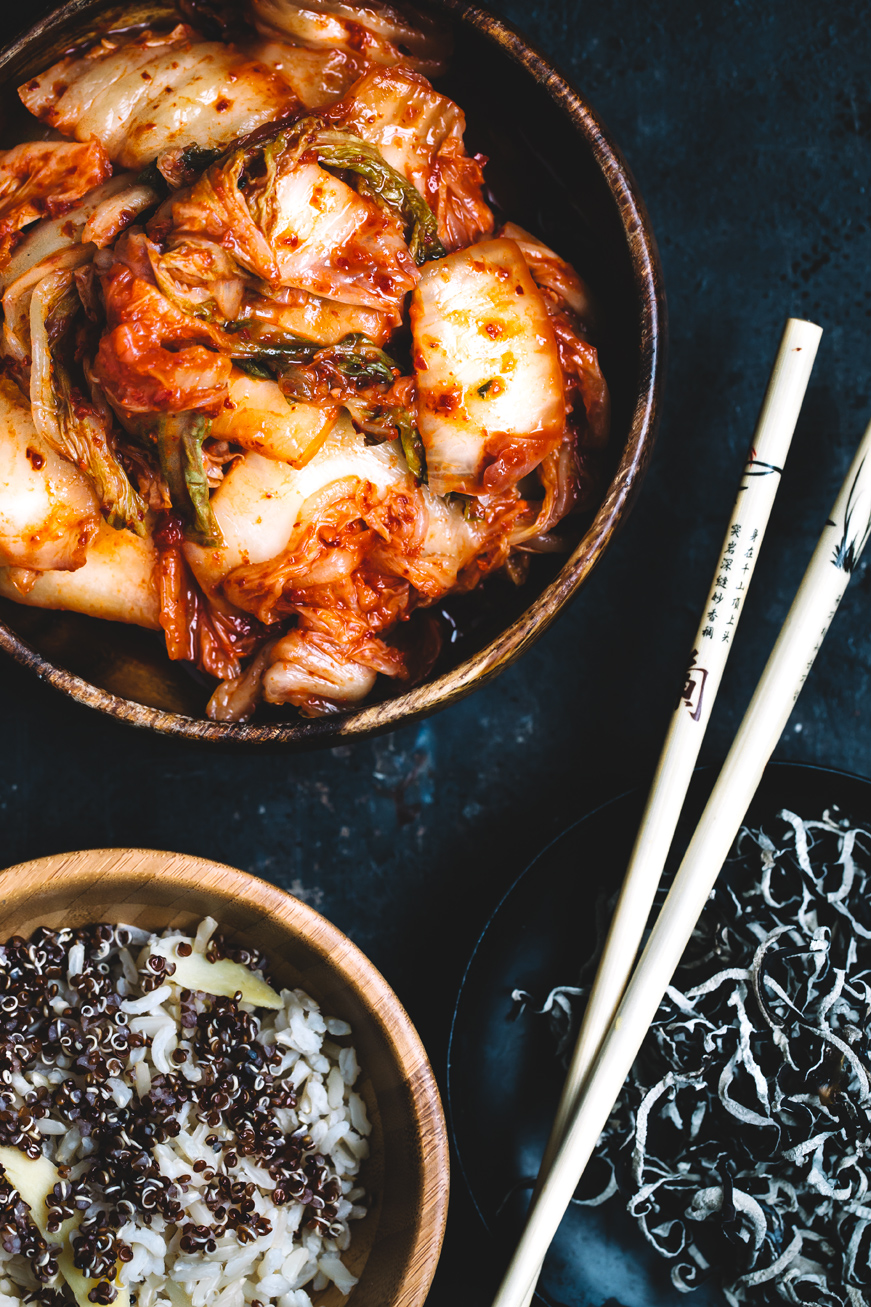

How to make your own kimchi
If you’re not interested in taking the easy route and picking up a jar of kimchi (usually found in the ethnic foods section of the grocery store or in Asian specialty food stores), you can make your own at home. The process is similar to making pickles in that you mix everything together and let it ferment for a few days before eating it. That way you’re maximizing the flavor and probiotic power.
The Kitchn has an excellent DIY kimchi recipe, including step-by-step instructions for fermentation, which may sound complicated but it’s really not. This recipe includes options for making the kimchi vegan and vegetarian friendly by using a seafood-like flavor such as kelp instead of the traditional fish sauce.
Ingredients:
• 1 head of napa cabbage
• ¼ cup sea salt or kosher salt
• Water
• 1 tbsp grated garlic
• 1 tsp grated ginger
• 1 tsp sugar
• 2-3 tbsp seafood flavor or water
• 1-5 tbsp Korean red pepper flakes (depending on how spicy you want it!)
• 8 ounces Korean radish or daikon, peeled and cut into matchsticks
• 4 scallions (green onions), trimmed and cut into 1-inch pieces
Method:
Head over to The Kitchn for step-by-step instructions and photo references to guide you through the fermentation process.
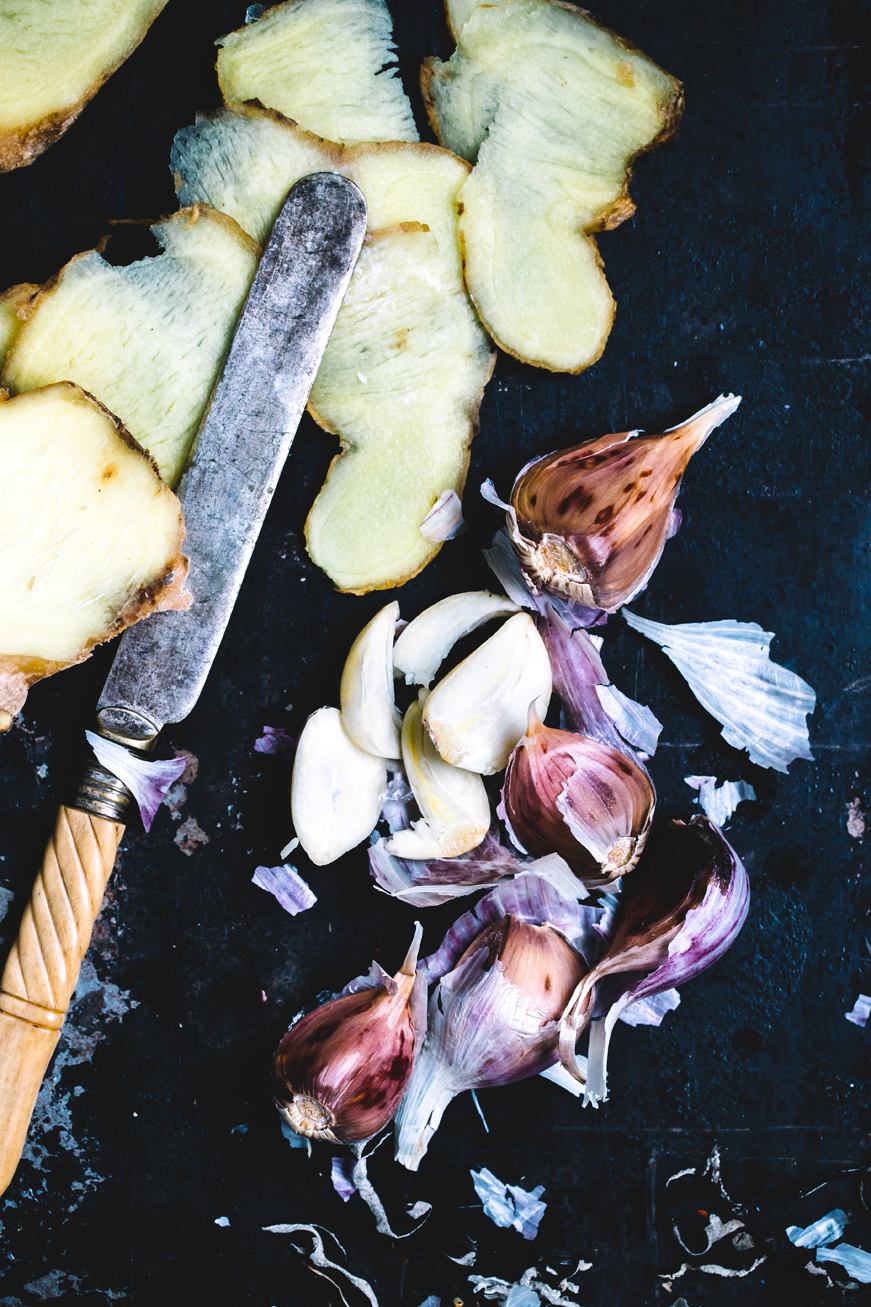
How to use kimchi
- Eat it straight out of the jar
- Add it to fried rice
- Use it as a side dish to any meal that features Asian flavors
- Roll it up inside lettuce wraps with rice and the protein of your choice
- Try making savory kimchi pancakes
- Refer to the Huffington Post’s excellent collection of recipes that use kimchi and let your imagination run wild (kimchi grilled cheese?! Yes please!)
If you’ve never tried kimchi, I strongly suggest you do. It’s nothing short of an adventure for your taste buds and it’s good for you too! Now please excuse me while I book my flight to Seoul for a tour of the Kimchi Field Museum (yes, that’s a thing).
How do you like to eat your kimchi? Tell us in the comments, on Facebook, or over on Twitter at @luvoinc. Don’t forget you can always take it for a test run in our Vegetable Bibimbap.

